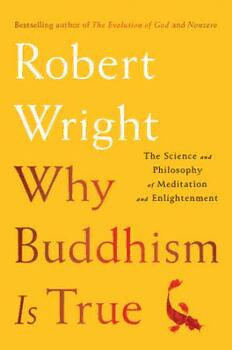
Why Buddhism is True - The Science and Philosophy of Meditation and Enlightenment PDF
Preview Why Buddhism is True - The Science and Philosophy of Meditation and Enlightenment
Thank you for downloading this Simon & Schuster ebook. Get a FREE ebook when you join our mailing list. Plus, get updates on new releases, deals, recommended reads, and more from Simon & Schuster. Click below to sign up and see terms and conditions. CLICK HERE TO SIGN UP Already a subscriber? Provide your email again so we can register this ebook and send you more of what you like to read. You will continue to receive exclusive offers in your inbox. Contents Epigraph A Note to Readers 1. Taking the Red Pill 2. Paradoxes of Meditation 3. When Are Feelings Illusions? 4. Bliss, Ecstasy, and More Important Reasons to Meditate 5. The Alleged Nonexistence of Your Self 6. Your CEO Is MIA 7. The Mental Modules That Run Your Life 8. How Thoughts Think Themselves 9. “Self” Control 10. Encounters with the Formless 11. The Upside of Emptiness 12. A Weedless World 13. Like, Wow, Everything Is One (at Most) 14. Nirvana in a Nutshell 15. Is Enlightenment Enlightening? 16. Meditation and the Unseen Order Appendix: A List of Buddhist Truths A Note on Terminology Acknowledgments About the Author Notes Bibliography Index For Terri, Mike, Becki, and Linda WRITER: But tell me before you go. What was the worst thing about being down here? AGNES: Just existing. Knowing my sight was blurred by my eyes, my hearing dulled by my ears, and my bright thought trapped in the grey maze of a brain. Have you seen a brain? WRITER: And you’re telling me that’s what’s wrong with us? How else can we be? —A Dream Play by August Strindberg, as adapted by Caryl Churchill A Note to Readers A ny book with a title like Why Buddhism Is True should have some careful qualification somewhere along the way. We might as well get that over with: 1. I’m not talking about the “supernatural” or more exotically metaphysical parts of Buddhism—reincarnation, for example—but rather about the naturalistic parts: ideas that fall squarely within modern psychology and philosophy. That said, I am talking about some of Buddhism’s more extraordinary, even radical, claims— claims that, if you take them seriously, could revolutionize your view of yourself and of the world. This book is intended to get you to take these claims seriously. 2. I’m of course aware that there’s no one Buddhism, but rather various Buddhist traditions, which differ on all kinds of doctrines. But this book focuses on a kind of “common core”—fundamental ideas that are found across the major Buddhist traditions, even if they get different degrees of emphasis, and may assume somewhat different form, in different traditions. 3. I’m not getting into super-fine-grained parts of Buddhist psychology and philosophy. For example, the Abhidhamma Pitaka, a collection of early Buddhist texts, asserts that there are eighty-nine kinds of consciousness, twelve of which are unwholesome. You may be relieved to hear that this book will spend no time trying to evaluate that claim. 4. I realize that true is a tricky word, and asserting the truth of anything, certainly including deep ideas in philosophy or psychology, is a tricky business. In fact, one big lesson from Buddhism is to be suspicious of the intuition that your ordinary way of perceiving the world brings you the truth about it. Some early Buddhist writings go so far as to raise doubts about whether such a thing as “truth” ultimately exists. On the other hand, the Buddha, in his most famous sermon, lays out what are commonly called “The Four Noble Truths,” so it’s not as if the word true has no place in discussions of Buddhist thought. In any event, I’ll try to proceed with appropriate humility and nuance as I make my argument that Buddhism’s diagnosis of the human predicament is fundamentally correct, and that its prescription is deeply valid and urgently important. 5. Asserting the validity of core Buddhist ideas doesn’t necessarily say anything, one way or the other, about other spiritual or philosophical traditions. There will sometimes be logical tension between a Buddhist idea and an idea in another tradition, but often there won’t be. The Dalai Lama has said, “Don’t try to use what you learn from Buddhism to be a better Buddhist; use it to be a better whatever- you-already-are.” —Robert Wright 1 Taking the Red Pill A t the risk of overdramatizing the human condition: Have you ever seen the movie The Matrix? It’s about a guy named Neo (played by Keanu Reeves), who discovers that he’s been inhabiting a dream world. The life he thought he was living is actually an elaborate hallucination. He’s having that hallucination while, unbeknownst to him, his actual physical body is inside a gooey, coffin-size pod—one among many pods, rows and rows of pods, each pod containing a human being absorbed in a dream. These people have been put in their pods by robot overlords and given dream lives as pacifiers. The choice faced by Neo—to keep living a delusion or wake up to reality—is famously captured in the movie’s “red pill” scene. Neo has been contacted by rebels who have entered his dream (or, strictly speaking, whose avatars have entered his dream). Their leader, Morpheus (played by Laurence Fishburne), explains the situation to Neo: “You are a slave, Neo. Like everyone else, you were born into bondage, into a prison that you cannot taste or see or touch—a prison for your mind.” The prison is called the Matrix, but there’s no way to explain to Neo what the Matrix ultimately is. The only way to get the whole picture, says Morpheus, is “to see it for yourself.” He offers Neo two pills, a red one and a blue one. Neo can take the blue pill
